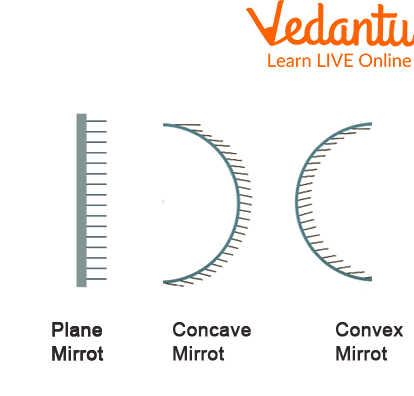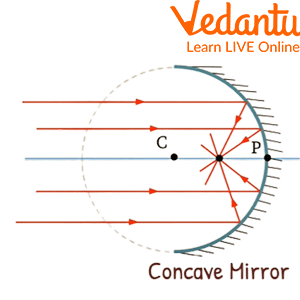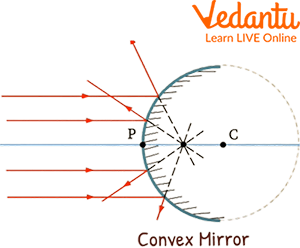




Overview of Mirrors in Space
Have you ever imagined what will happen if you take the Mirrors available in your home into space? Will it form the same kind of image as it does at your home? Will it break down and not form any kind of image? So many questions right ! We find mirrors everywhere around us. From the mirror used in the house to see how we are looking to the mirrors used as rear mirrors in cars to see the objects coming from behind. In this article, we will discuss all the facts regarding mirrors, what mirror reflections are and do mirrors work in space. So, let's start learning!

Reflection in the Mirror
What are Mirrors?
A mirror is an object that has a smooth surface and forms images of the objects nearby. Mostly, the regular Mirrors are made out of a sheet of glass that has a shiny metal coating on its back side.
Mirrors on a large scale are made in factories where there is availability of specialised machinery. By using the machinery, first, the sheet of glass is polished and made smooth. Then the back side of the glass is covered with a layer of any metal like silver, aluminium. After that, the metal used is covered with another layer of any copper, varnish or any kind of paint so that it is protected from environmental attacks and scratches.
Types of Mirrors
Generally, the mirrors found around us are flat and are referred to as plane mirrors. Images formed in plane mirrors are laterally inverted. For example, if you stand in front of a mirror and raise your left hand while looking into the mirror you will notice that the image formed in the mirror will appear to you as if you have raised your left hand.

Different Types of Mirrors
There can be two more kinds of mirror also namely convex and concave mirror.
The convex mirrors are bulged outwards and curved outwards.
The convex kind of mirrors form images that are smaller and reverse than their actual size.
Whereas, the concave Mirrors are curved in words and forms images that are upside down then the real object
What are Mirror Reflections?

Mirror Reflection
The formation or appearance of an image of any object into a mirror is called the phenomenon of reflection. The phenomenon of reflection occurs when light hits the surface of any object. Generally when light is passed through any surface it gets reflected back. Most of the surfaces absorb some amount of the light which is passed through it and reflects back a little amount of it. Mirrors usually reflect all of the light that hits them. This happens due to the metallic coating on the back of the mirrors.
When we stand in front of a mirror, bodies reflect the pattern of the light falling on it and follow it to the mirror and those patterns of light bounce back and form the image of ourselves in the mirror that we see and perceive through our eyes. Below are attached some mirror reflection images which will help you understand how light falls and is reflected by various surfaces and kinds of mirrors.

Reflection Through Different Types of Surfaces
Reflection Through Convex and Concave Mirrors
The phenomenon of reflection occurs in surfaces that are shiny or polished like glass, water or any polished metal. These objects or surfaces mentioned above, reflect the light with the same angles with which it hits the surface.
The angle with which any ray of light hits the reflecting surface or any smooth surface is called the angle of incidence. Whereas, the angle with which the reflected rays bounce back is called an angle of reflection.
Concave Mirrors

Reflection through Concave Mirror
Concave Mirrors are used in telescopes to form the reflection of sources that are faint high up in the sky and condense the faint light coming from them to form a sharp image into the telescope which is visible to our naked eyes.
In the concave mirrors the light coming from various sources travel in a straight line towards the mirror and are reflected to meet at a certain point called the focal point.
Concave mirrors are used in shaving mirrors, astronomical telescopes, headlights of automobiles etc.
Convex Mirrors

Reflection of Light Through Convex Mirror
In the convex mirrors the light coming from the source reflects outwards and away from the focal point of the mirror. Which makes a small size and erect image of the object.
Convex Mirrors are used as rear view mirrors in vehicles and in shops for security for a wider vision of field
Do Mirrors Work in Space?
Till now we have looked at all the properties of the mirrors and how they perform the phenomenon of reflection. To answer the question whether mirrors work in space or not. We can say that mirrors actually work the same as they do on earth in space. Because mirrors are used in telescopes and various other instruments that are carried into space by astronauts to observe the outer space and environment outside the earth.
Summary
To conclude all the learnings from this article we can say that Mirrors are very useful for daily life activities for humans they are used for dressing up and also used for very highly specified purposes like astronomy. Mirrors have a very valuable space in human life. We cannot imagine the foundation of devices like cameras, telescopes etc. without the discovery of mirrors. With this we would like to end this article and hope that our work is clear and understandable enough to clear all your doubts regarding Mirrors and their properties. However, if you still have any doubts you can write it down in the comment section below.
FAQs on Do Mirrors Work In Space
1. What is the colour of the mirrors?
Mirrors are usually white in colour; they appear to be transparent due to the coating of elements on its backside. And according to scientists the mirrors are made of white colour along with a tint of green into it which can be seen in bright sunlight.
2. Who discovered the first mirror?
Justus von Liebig was the one who invented mirrors for the very first time in 4000-300 BCE in the country of Egypt.
3. Are all mirrors the same?
No, not all the mirrors are of the same quality. Some mirrors can diverge the light like convex mirrors whereas some mirrors can converge the light like concave mirrors.









